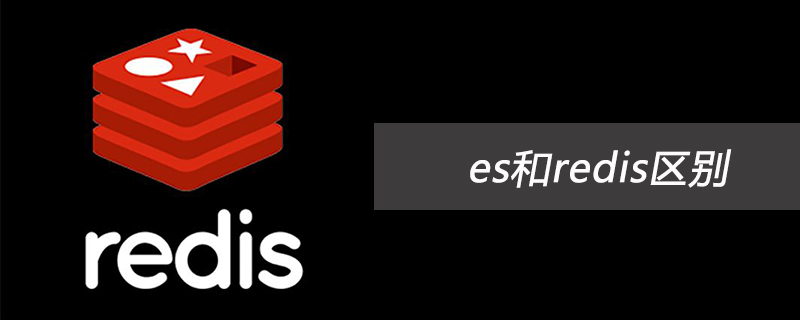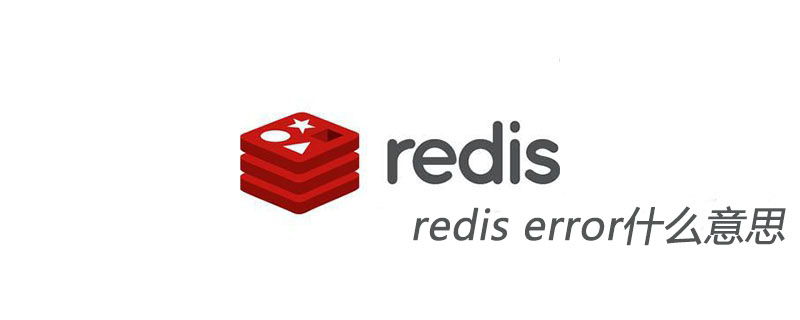
redis is a high-performance key-value database. The emergence of redis has largely compensated for the shortcomings of key/value storage such as memcached, and can play a very good supplementary role to relational databases in some situations. It is written in ANSI C language, supports network, can be memory-based and persistent log type, and provides APIs in multiple languages.
Mac itself comes with a PHP environment, but the redis extension is not installed. We need to install it separately. Below I will talk about the installation steps and what needs to be paid attention to.
Installing and starting redis
1. Unzip the downloaded redis to the /usr/local directory and run the command: tar -zxvf redis-5.0.5.tar.gz -C / usr/local/redis-5.0.5
2. The terminal enters the decompressed root directory: cd /usr/local/redis-5.0.5
3. Test compilation: sudo make test
4. Install redis: sudo make install
If the following error is reported during the test in step 4:
Executing test client: couldn't execute "src/ redis-benchmark": no such file or directory.
Perform the following two steps
(1),sudo make distclean
(2),sudo make
5. Configuration
After the above installation is successful, configure the php.ini file:
extension_dir = "/usr/lib/php/extensions/no-debug- non-zts-20131226/"
#The address here is the location where redis.so is installed in your reids.
extension = redis.so
6. Print out phpinfo() to see if the installation is successful. If you can see the following information, the installation is successful.

(Check whether redis is installed successfully: You can also execute make test after the installation is completed, and [o/ All tests passed without errors!] [Cleanup: may take some time. .. OK】Indicates that redis is installed successfully.)
7. Modify [daemonize no] in redis.conf in the redis root directory to [daemonize yes] to start in background running mode
8. Start redis executes the command in the redis root directory: ./src/redis-server ./redis.conf. To stop the redis service, you can execute the client command: ./src/redis-cli shutdown
9. Log in to the client command. For: [./src/redis-cli] or [./src/redis-cli -p 6379] or [telnet 127.0.0.1 6379], execute it in the root directory of the redis installation folder.
Testing redis
After completing the installation and starting redis, log in to the client to test redis.
Example:
127.0.0.1:6379> set key "success" //写入数据 OK 127.0.0.1:6379> get key //读取数据 "success" 127.0.0.1:6379>
Problem summary
1. When sudo make install prompts
Installing shared extensions: /usr/lib/php/extensions/no-debug- non-zts-20131226/
cp: /usr/lib/php/extensions/no-debug-non-zts-20131226/#INST@12567#: Operation not permitted
make: * [install-modules] Error 1
Solution:mac php installation extension make install not permit
2. After installation, configure the php.ini file
in the file extension=redis.so was added. When testing redis, it was found that it did not come out.
Solution:
extension_dir = "/usr/local/php/lib/php/extensions/no-debug-zts-20090626" #In the address, write the address returned by make install
extension=redis.so
For more redis knowledge, please pay attention to the redis introductory tutorial column.
The above is the detailed content of Introduction to the installation and use of redis extension in mac environment. For more information, please follow other related articles on the PHP Chinese website!
 es和redis区别Jul 06, 2019 pm 01:45 PM
es和redis区别Jul 06, 2019 pm 01:45 PMRedis是现在最热门的key-value数据库,Redis的最大特点是key-value存储所带来的简单和高性能;相较于MongoDB和Redis,晚一年发布的ES可能知名度要低一些,ES的特点是搜索,ES是围绕搜索设计的。
 一起来聊聊Redis有什么优势和特点May 16, 2022 pm 06:04 PM
一起来聊聊Redis有什么优势和特点May 16, 2022 pm 06:04 PM本篇文章给大家带来了关于redis的相关知识,其中主要介绍了关于redis的一些优势和特点,Redis 是一个开源的使用ANSI C语言编写、遵守 BSD 协议、支持网络、可基于内存、分布式存储数据库,下面一起来看一下,希望对大家有帮助。
 实例详解Redis Cluster集群收缩主从节点Apr 21, 2022 pm 06:23 PM
实例详解Redis Cluster集群收缩主从节点Apr 21, 2022 pm 06:23 PM本篇文章给大家带来了关于redis的相关知识,其中主要介绍了Redis Cluster集群收缩主从节点的相关问题,包括了Cluster集群收缩概念、将6390主节点从集群中收缩、验证数据迁移过程是否导致数据异常等,希望对大家有帮助。
 Redis实现排行榜及相同积分按时间排序功能的实现Aug 22, 2022 pm 05:51 PM
Redis实现排行榜及相同积分按时间排序功能的实现Aug 22, 2022 pm 05:51 PM本篇文章给大家带来了关于redis的相关知识,其中主要介绍了Redis实现排行榜及相同积分按时间排序,本文通过实例代码给大家介绍的非常详细,对大家的学习或工作具有一定的参考借鉴价值,希望对大家有帮助。
 详细解析Redis中命令的原子性Jun 01, 2022 am 11:58 AM
详细解析Redis中命令的原子性Jun 01, 2022 am 11:58 AM本篇文章给大家带来了关于redis的相关知识,其中主要介绍了关于原子操作中命令原子性的相关问题,包括了处理并发的方案、编程模型、多IO线程以及单命令的相关内容,下面一起看一下,希望对大家有帮助。
 实例详解Redis实现排行榜及相同积分按时间排序功能的实现Aug 26, 2022 pm 02:09 PM
实例详解Redis实现排行榜及相同积分按时间排序功能的实现Aug 26, 2022 pm 02:09 PM本篇文章给大家带来了关于redis的相关知识,其中主要介绍了Redis实现排行榜及相同积分按时间排序,本文通过实例代码给大家介绍的非常详细,下面一起来看一下,希望对大家有帮助。
 一文搞懂redis的bitmapApr 27, 2022 pm 07:48 PM
一文搞懂redis的bitmapApr 27, 2022 pm 07:48 PM本篇文章给大家带来了关于redis的相关知识,其中主要介绍了bitmap问题,Redis 为我们提供了位图这一数据结构,位图数据结构其实并不是一个全新的玩意,我们可以简单的认为就是个数组,只是里面的内容只能为0或1而已,希望对大家有帮助。
 redis error什么意思Jun 17, 2019 am 11:07 AM
redis error什么意思Jun 17, 2019 am 11:07 AMredis error就是redis数据库和其组合使用的部件出现错误,这个出现的错误有很多种,例如Redis被配置为保存数据库快照,但它不能持久化到硬盘,用来修改集合数据的命令不能用。


Hot AI Tools

Undresser.AI Undress
AI-powered app for creating realistic nude photos

AI Clothes Remover
Online AI tool for removing clothes from photos.

Undress AI Tool
Undress images for free

Clothoff.io
AI clothes remover

AI Hentai Generator
Generate AI Hentai for free.

Hot Article

Hot Tools

Safe Exam Browser
Safe Exam Browser is a secure browser environment for taking online exams securely. This software turns any computer into a secure workstation. It controls access to any utility and prevents students from using unauthorized resources.

SublimeText3 Mac version
God-level code editing software (SublimeText3)

Atom editor mac version download
The most popular open source editor

PhpStorm Mac version
The latest (2018.2.1) professional PHP integrated development tool

VSCode Windows 64-bit Download
A free and powerful IDE editor launched by Microsoft






